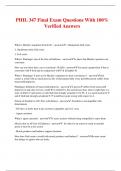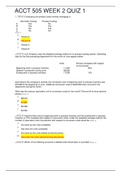, PLEASE USE THIS DOCUMENT AS A GUIDE TO ANSWER YOUR ASSIGNMENT
Please note that the author of this document will not responsibility for any plagiarizing you
commit.
1. Explain the basic principles of motivational leadership.
Motivational leadership is centered around understanding and addressing the unique needs, values,
and desires of each team member. Leaders in this realm must lead by example, embodying the
behaviors and values they wish to see in their teams. Building trust is paramount, achieved through
recognizing individual abilities, securing commitment, ensuring fair rewards, and maintaining high
expectations. Effective communication plays a crucial role, involving keeping the team informed,
setting clear expectations, and actively listening to their concerns. Positive reinforcement is a key
motivator, often more effective than traditional incentives like money, as it fosters a sense of control,
responsibility, and accomplishment. Motivational leadership demands continuous commitment,
regularly evaluating and adapting motivational strategies to fit changing circumstances and
individual needs. Sensitivity to diversity within the team helps prevent misunderstandings and fosters
a positive, inclusive environment. Empathy and active listening are essential, enabling leaders to
understand and address their team members' challenges. Setting clear, achievable goals and being
flexible in adjusting plans to meet evolving needs is vital. Finally, consistent application of
motivational techniques and holding others accountable for their support ensures the sustained
success of motivational strategies. These principles together help leaders inspire and guide their
teams toward achieving their goals and maintaining high performance standards.
Basic Principles of Motivational Leadership
Individualized Attention: Motivational leadership involves recognizing that each person has
unique needs, values, and desires. Leaders should tailor motivational plans to meet these
individual needs to effectively motivate their team members .
Role Models: Leaders must lead by example. They should be willing to sacrifice their own
wants and desires to set a positive example for their team. For instance, safety leaders must
adhere to all safety protocols themselves to encourage others to follow suit .
Building Trust and Recognition: Motivational leaders build trust, recognize abilities, gain
commitment, ensure rewards, and expect the best from people. They facilitate the development
of human potential and inspire others to adhere to prudent practices at work .
Effective Communication: Good leaders keep their team informed, make their expectations
clear, and actively listen to their team members. They understand the importance of
communication in motivating and engaging their team .
Positive Reinforcement: Traditional incentives like money are less effective than positive
reinforcement related to accomplishments. Leaders should provide control, responsibility, and
meaningful tasks to their team members, recognizing and rewarding their achievements .
Continuous Commitment: Motivating people is an ongoing process that requires a continuing
commitment. Leaders must regularly evaluate their motivational techniques and adapt them to
changing circumstances and individual needs .






